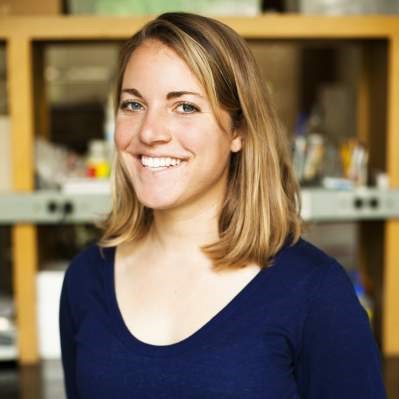
Feel free to contact Allegra at allegramayer @ berkeley. edu if you have questions or comments regarding the content here.
Allegra Mayer is a biogeochemist and ecosystem ecologist with an impressive breadth and depth of knowledge of ecosystem, regional, and global carbon cycling. Allegra came to Berkeley from a background in the geosciences and quickly expanded her skill set. Her first paper used an Earth system modeling approach to determine the potential to lower global temperatures with improved agricultural land-use practices. Her next paper is focusing on regional carbon and greenhouse gas dynamics by exploring the effects of compost amendments on ecosystem processes under contrasting future climate scenarios and two different climate models. But Allegra is not just a modeler. She conducted fieldwork in Puerto Rican rainforests (and storage rooms in Richmond, CA) to explore a 30 record of carbon storage and loss. She is using radiocarbon analyses together with data on disturbance ecology, litter decomposition, and mineral-carbon interactions to sleuth out the controls on carbon cycling in these important ecosystems. Last, but not least, Allegra has conducted a series of laboratory studies combined with modeling to elucidate the factors controlling carbon and greenhouse gas dynamics in amended rangeland soils. She has mentored undergraduate thesis projects, trained graduate students and postdocs in modeling and laboratory techniques, and participated in public outreach using her science communication skills. As if this weren’t enough, she competed in and won local, regional, and national ultimate frisbee tournaments. And did I mention that she also runs races? As Allegra ‘races to the finish line’ of her PhD I think we can all look forward to her brilliant scientific career and continued leadership.
– Whendee Silver, associate professor, department of ESPM
About Allegra
I am generally interested in the balance of biogeochemical fluxes of carbon at the soil-atmosphere interface. My research has examined mechanisms and overall potential for carbon sequestration in soil at all scales, from global to molecular scale, with the motivation of understanding how managing landscapes can contribute to negative emissions and climate change mitigation. My dissertation research has used a combination of modeling and lab analyses to explore the potential for agricultural land management to sequester carbon in soil and lower global surface temperatures, and the potential contribution of compost amendments to soil carbon sequestration in California. In collaboration with scientists at LLNL, I used radiocarbon isotope tracing to elucidate rates of soil carbon turnover and mechanisms of carbon storage in tropical soils. I hope to continue working on solutions-focused science throughout my career.
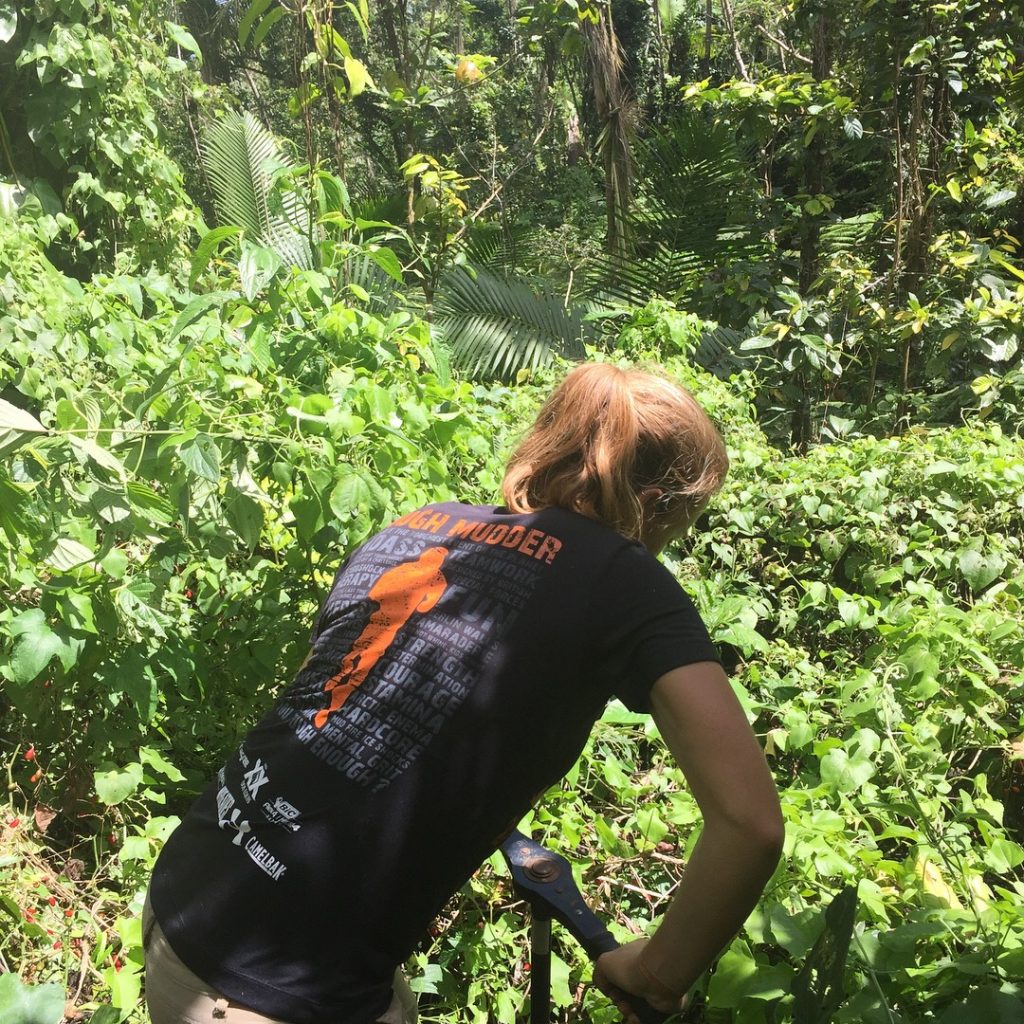
Resampling soil 30 years after the original soil survey, Luquillo LTER, El Yunque forest, Puerto Rico. 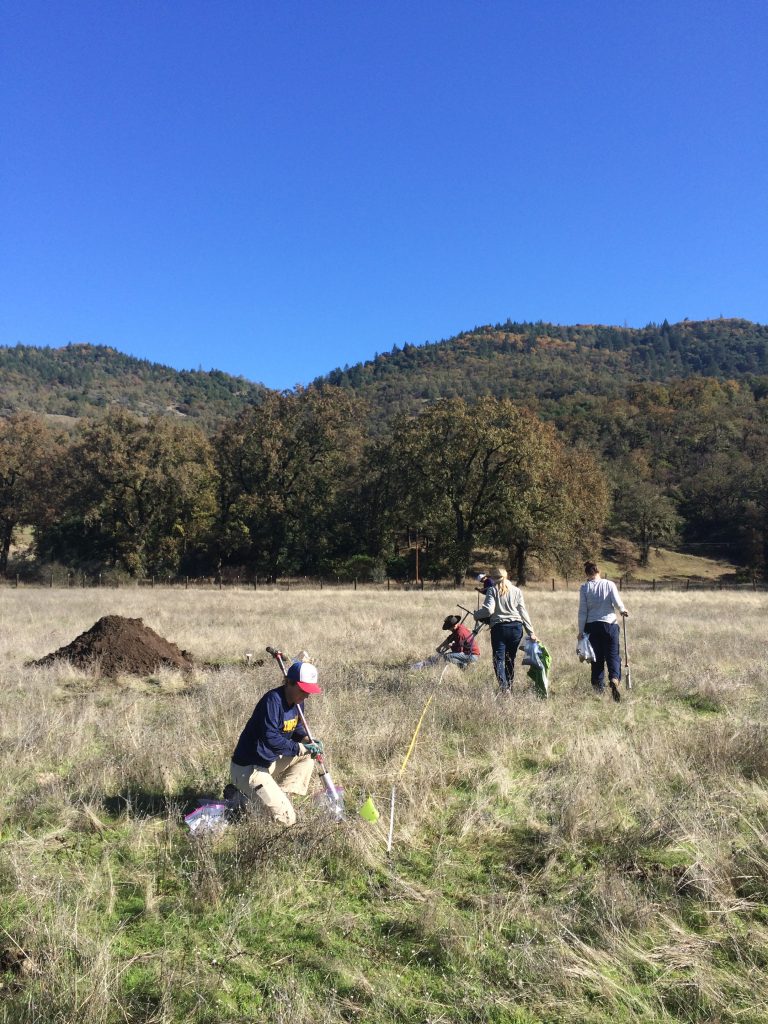
Soil sampling prior to compost amendment in Mendocino County, California.
Dissertation title:
Can soils help mitigate climate change?
Soil has a large capacity for carbon storage, yet the global soil carbon pool has been degraded over many centuries of agricultural land management. As greenhouse gas emissions to the atmosphere continue at an unprecedented rate, natural solutions to draw down atmospheric carbon and increase soil carbon storage have been posited as a low-tech, negative emissions technology. My dissertation focuses on the potential for soil carbon sequestration across scales, from global to regional to local watershed.
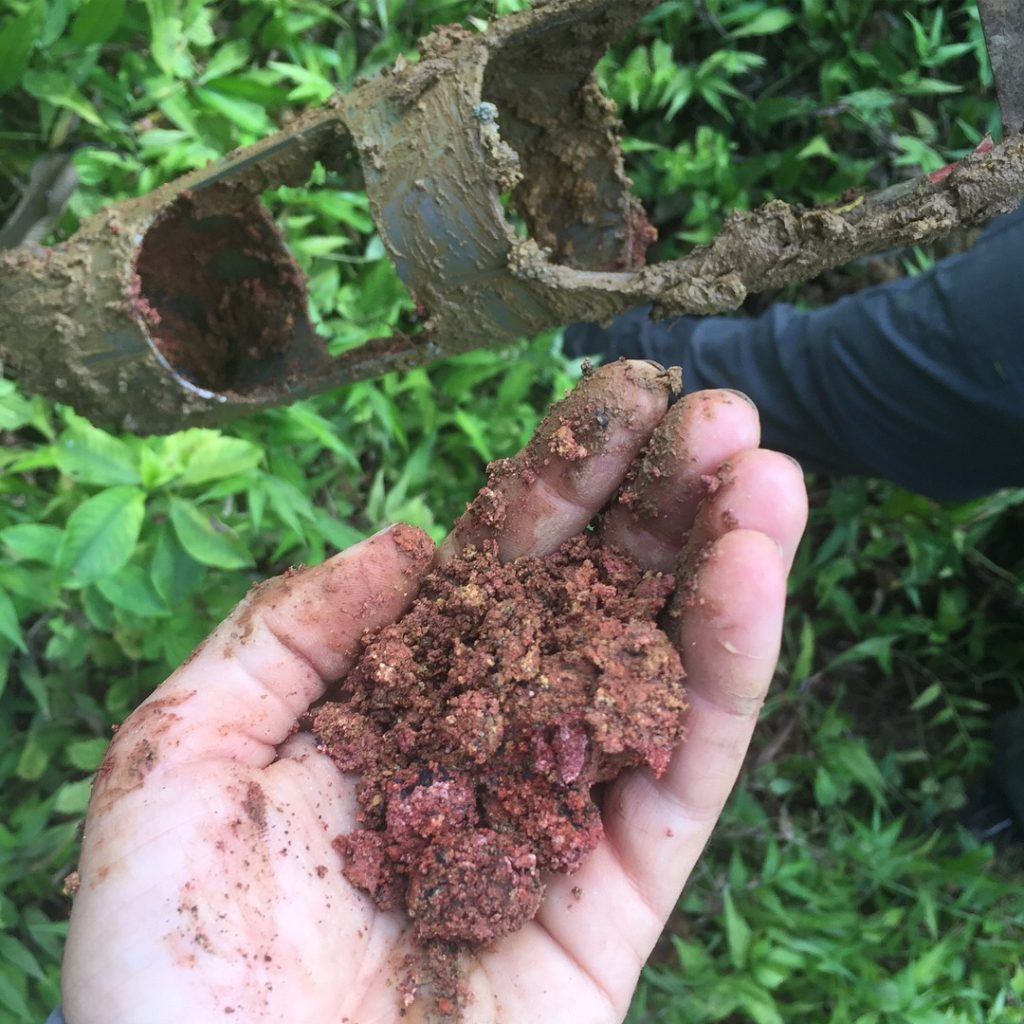
At the largest scale, I examined if levers of existing techniques for agricultural soil actually sequester enough carbon in soil to meaningfully reduce global surface temperature. In collaboration with scientists at LBNL and in the Energy and Resources Group, we translated published rates of soil sequestration due to land management practices (e.g cover cropping on cropland, sowing legumes and optimizing grazing on rangelands) to their associated reductions in global warming. Using a global climate model simulator, we found that combining carbon-smart agricultural management practices with large scale anthropogenic greenhouse gas emissions reduction could contribute as much as 0.26 deg C of warming reductions by 2100 (Mayer et al., 2018). Sequestration practices were most efficient at temperature reduction when paired with emissions reductions, and are sensitive to the duration of the effective sequestration rate. This work is the foundation for my next two chapters, which focus on sequestration rates of a specific agricultural management practice over time, and the turnover time of carbon in soil.
You can read a press release on this research here:
At a regional level, my research examined the scalability of soil carbon sequestration observed in two grassland sites within California to the rest of the state, and how those biogeochemical changes would be influenced by climate change. I used a range of Earth System Model climate projections to drive a process-based biogeochemical model (DayCent) to measure soil carbon, net primary production, and greenhouse gas emissions at a range of sites on a monthly basis through 2100 (Mayer & Silver, in prep & Technical Report in California’s 4th Assessment on Climate Change). I found that simulating a one-time compost application resulted in significant soil carbon sequestration relative to control. Carbon sequestration peaked between 15-20 years after amendment, but carbon storage remained higher than the control through the end of the century in all sites and climate projections.
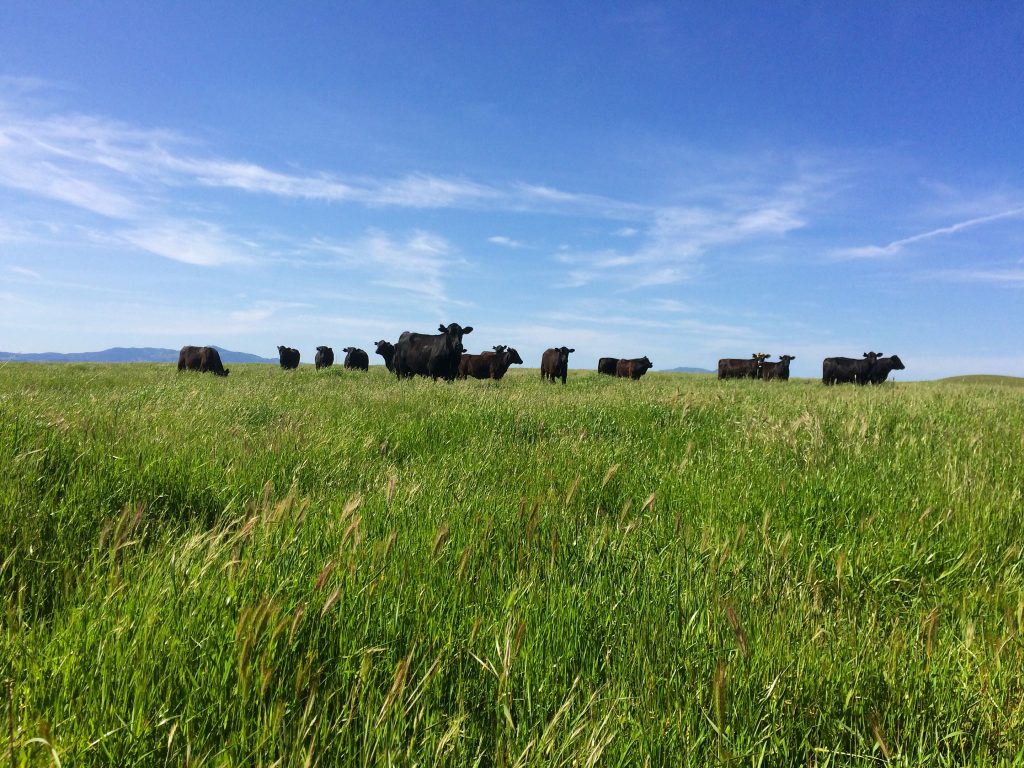
To improve our understanding of the greenhouse gases stimulated by the addition of compost to soil, my first year lab-incubation project showed that composted amendments resulted in much lower initial emissions than raw manure or bedding amendments. I mentored two talented undergraduates (Hannah Marsh and Uthara Vengrai) through their honors theses, who contributed results showing that amendments of food waste compost have even lower greenhouse gas emissions than dairy-waste derived compost, and that methane and nitrous oxide emissions from compost on different soil types in California were indistinguishable from control treatments.
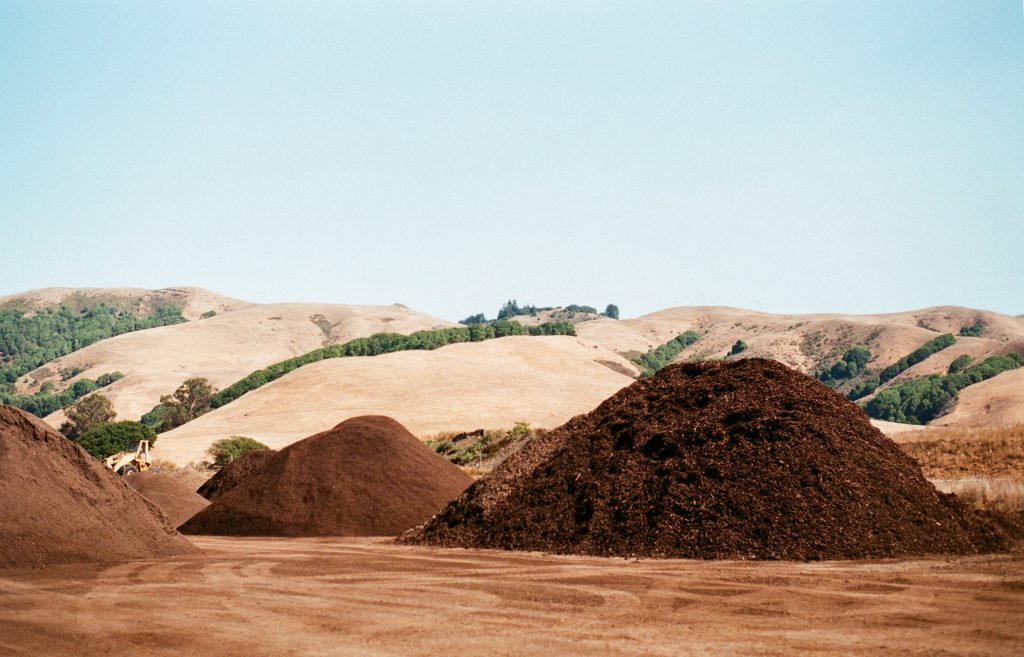
The final piece of my research zooms in on carbon storage and turnover on a watershed and molecular scale. With support from CAMS at Lawrence Livermore National Lab, I used radiocarbon (14C) to trace decadally cycling carbon through mineral-stabilized and free-floating fractions. By comparing the carbon isotope signatures from samples collected from the Luquillo Long Term Ecological Research station in Puerto Rico in 1988 (by my advisor, Whendee Silver), and the samples I collected at the same sample sites 30 years later, we found that i) major hurricanes impacted the forest structure and thereby carbon cycling patterns, ii) carbon cycles decadally at the surface but turnover times of carbon at depth can be hundreds to thousands of years, and iii) the rapid increase in anthropogenic carbon emissions is traceable in soil carbon (Mayer, McFarlane & Silver, in prep).
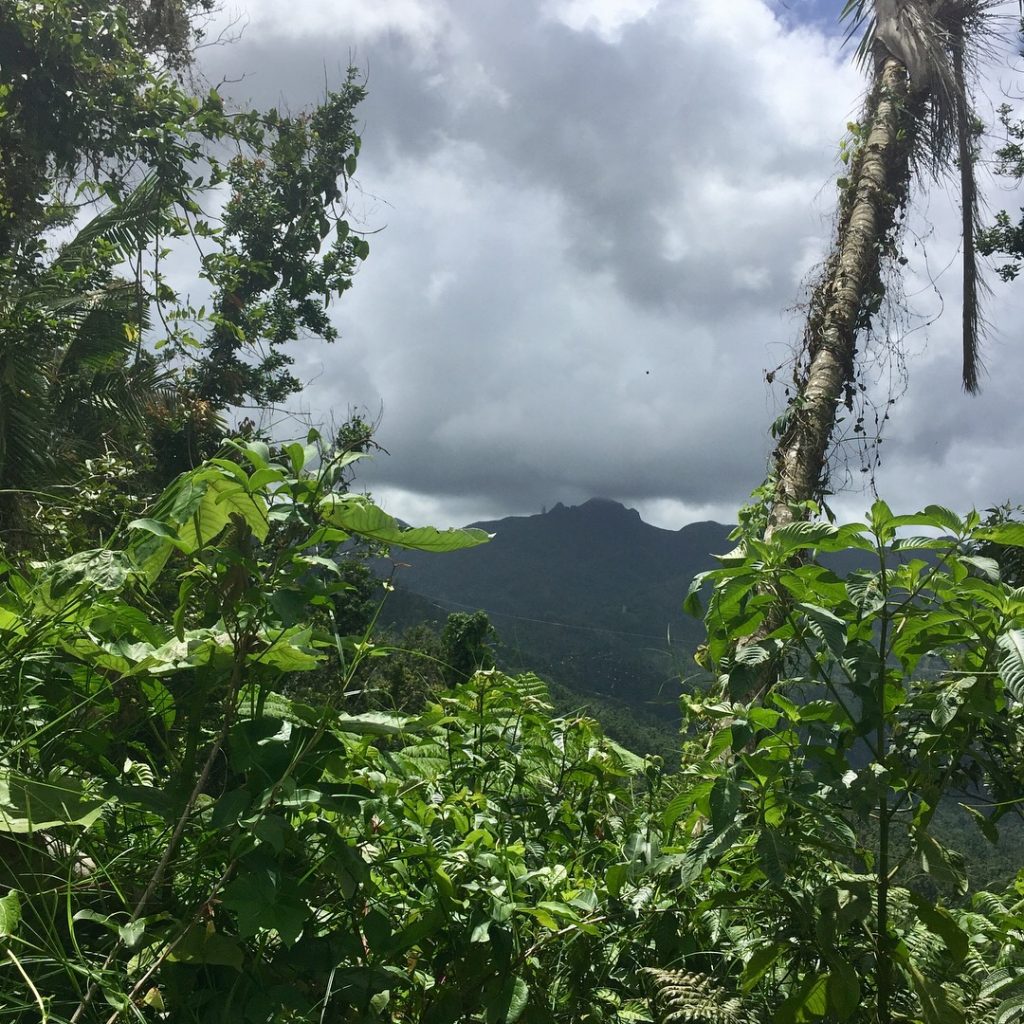
Acknowledgements
I am grateful to my advisor, Whendee Silver, for her patient mentorship, and to my fellow Silver Lab members for the support and community. Thanks also to Karis McFarlane and the terrestrial carbon group at LLNL. I would also like to thank the supportive and hilarious members of Tree Huckers AKA Discus Elegans, the ESPM department IM Ultimate team that rose to champions in our last season, for adding balance to my academic experience. Last but not least, I have endless gratitude for my family.
Allegra’s dissertation research has been funded by the following agencies and awards
- Rathmann Foundation
- California State Coastal Conservancy
- George and Violet Homem Graduate Award
- Carbon Neutrality Initiative Fellowship
- Lawrence Graduate Research Scholarship
